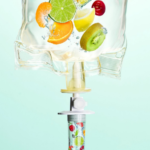
What percentage of “research chemicals” sold wind up getting used by researchers?
The answer is lower than you might think. That’s because while there are plenty of legitimate laboratory needs for certain research chemicals, there’s plenty of illicit demand, as well.
That illicit demand is a problem. Chemicals purchased for “research” can be used as illegal steroids or manufactured into designer drugs. Buyers may use research chemicals as medical treatments without understanding safety risks.
If you’re a research chemical vendor, selling them safely is part of your job description. How do you make sure your research chemical sales don’t harm anyone or help buyers break the law?
Check Credentials
Safe online sales can be extra-challenging. The best research chemicals are just a click away for all buyers, whether they’re researchers or not. How can you tell who’s who when you may never meet buyers in person?
Most research jobs require high-level training and credentials. Checking for these credentials is a quick but effective way to vet your buyers.
If you’re not sure a set of credentials are real, you can always call the institutions they’re associated with to double-check. Some researchers may have university or hospital web pages. Remember that information found only on social media pages isn’t vetted.
Ask for Research Details
The National Institute on Drug Abuse provides controlled substances to researchers who study drugs. How do they avoid shipping drugs to someone who just wants to get high?
One key NIDA step is gathering information on the proposed research. Researchers must accompany their request to buy research chemicals with an in-depth description of their research plan.
Research chemical retailers can follow NIDA’s lead. Don’t be afraid to ask for specific details about your buyers’ research.
Track Large-Volume Buyers
Some buyers, such as hospitals and research institutions, genuinely need large amounts of research chemicals. But what about a tiny lab with a P.O. box?
Unusually frequent and/or large orders from a small-scale researcher should raise red flags. These buyers may be reselling chemicals or manufacturing designer drugs.
Of course, small labs can have legitimate research needs for high-volume orders. But when an order size and a buyer seem mismatched, always do your research.
Be Vigilant about Abusable Chemicals
Some research chemicals and compounds face a far higher risk of abuse than others. “Research only” sales of tryptamine and phenethylamine, for example, have been connected to illegal ketamine use.
While there is plenty of valid research uses for these substances, there’s plenty of illicit demand, as well. If you sell a wide range of research chemicals, know which ones are the most commonly abused. This information will help you prioritize your monitoring and safety efforts.
Pack and Ship Safely
Selling research chemicals safely isn’t just about stopping illicit chemical use. It’s also about ensuring the safety of delivery drivers, receptionists, and anyone else who handles the chemicals in transit.
Depending on the product, you may face shipping limitations. Some products may be ineligible for air travel or sale outside certain jurisdictions. Any research chemical considered hazardous needs to follow regulations on hazardous materials labeling.
Glass bottles may need foam or cardboard to hold them in place. Anything holding a liquid or powder should go inside another water-proof covering to contain leaks.
Keep Dangerous Research Chemicals With Researchers
Your next research chemicals shipment could help a researcher change the world for the better. But if you’re not careful, it could hurt someone instead.
That’s why vigilance and education about chemical selling practices are key. Read more about this important topic in our archives.


